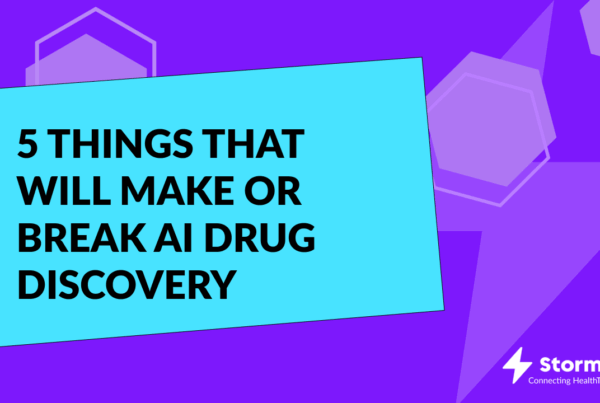As COVID-19 has highlighted: our world is an unequal one, with some being able to live healthier lives and have greater access to healthcare services than others. In light of this, the World Health Organization has declared that the campaign for this year’s World Health Day is to build a fairer, healthier world. Even before the pandemic, the HealthTech industry had taken massive strides towards increasing access to healthcare. This World Health Day, we want to highlight the role Telemedicine is having on healthcare distribution, and discuss the various tools and services that are being utilised with the goal of closing the healthcare delivery gap for good.
The Postcode Lottery
Where you are born has a huge impact on your access to healthcare. According to a report published in 2017 by WHO and the World Bank, up to 3.5 billion people – nearly half the world’s population – still don’t receive the health services they need. And while the lack of access to care is clearly an urgent issue in low-and middle-income countries – and there should be a huge focus on improvements in these areas – sustainable access to care is also a huge concern in industrialised countries, where social detriments have a direct link to the social and economic opportunities available to one population over another.
Fortunately, as technology and healthcare become more integrated, one priority is being positioned at the forefront: eliminating the gaps in healthcare delivery. Digital technology is set to continue upgrading healthcare tools and services in emerging nations, as well as improving access to care in industrialised ones, to ultimately improve the quality and consistency of healthcare services across the globe.
Telemedicine: Reaching Beyond Hospital Walls
With telemedicine being the practice of medicine using technology to deliver care at a distance, treating or monitoring a patient no longer has to begin or end in a hospital, opening up several doors with regard to healthcare access.
In fact, more accessible and convenient healthcare for patients is the driving force behind the fields’ evolution. Telemedicine was originally developed in the US as a way to address care shortages, especially in relation to remote rural areas. Now, Telemedicine is used around the world, and has the power to not only break down typical geographical barriers to healthcare, but to also make the entire healthcare delivery model more convenient for patients.
Telemedicine is an umbrella term which encompasses a number of digital health tools and services. However, there are three sub-sectors of Telemedicine that are leading the charge towards eliminating barriers to healthcare, with these being: mHealth, video consultations, and remote patient monitoring.

mHealth:
Mobile health technology – also known as mHealth – is a rapidly expanding field in telemedicine that provides healthcare support, delivery and intervention via mobile technologies. With smartphones and mobile devices being widely adopted and used daily across the globe and among all socioeconomic levels and ages, it’s no wonder that the implementation of mHealth is helping to close the healthcare delivery gap.
There are already hundreds of mHealth initiatives taking place around the world that are delivering frontline services across low-and middle-income countries. Project Mwana for example, is a mobile health initiative in Zambia which reduces the delay in transferring test results by using text messaging, thereby improving children’s chances of a healthy life.
Alex Jadad, founder of the Centre for Global eHealth Innovation says that even in the most resource-scare settings, mobile phone use and technological barriers to the adoption of virtual healthcare are easily surmountable,
“Whether I’m deep in Malawi or deep in the Amazon, all I need is a mobile phone and a good connection that allows me to talk to a clinician. That’s all it takes for a clinical encounter. There’s no need for us to wait for any more sophisticated infrastructure than that.”

Video Consultations:
The rise of video consultations as a result of the pandemic have vastly improved global access to care. As leaving your home is no longer a necessary factor in receiving healthcare, people with disabilities, the older generation, and those who are geographically isolated from healthcare settings have greater access to healthcare professionals. Thinking more broadly, video consultations will likely also reduce the number of missed appointments (and missed work time), providing an economic benefit.
Yanwu Xu, principal health architect for Baidu Health – one of China’s largest internet corporations, explains that the virtual care has been very much embraced in the country, adding that
“Thanks to these technologies physicians can consult with upwards of a hundred patients a day, which is a very significant increase in the daily caseloads they handled in person in the past.”

Remote Patient Monitoring:
Remote patient monitoring comprises tools and technology which enable the monitoring of patients outside of conventional clinical settings, such as the home or in a remote area, opening the door to expanded healthcare access.
One of the most effective ways RPM devices are closing the healthcare delivery gap is by overcoming physician shortages. Often, low-and middle-income countries have too large a population and too few medical physicians, making it impossible to provide healthcare for everyone who needs it. RPM represents a smart solution to maintaining accessible and quality patient care where the physical presence of a healthcare provider may be lacking. As a fallout from the pandemic, healthcare organizations have rapidly adopted remote patient monitoring technology, and within the next five years, the RPM market is expected to double in size.
Future Predictions:
Telemedicine is set to become a standard service offered in healthcare services across the globe, and many specialists are optimistic about the impact telemedicine will have on future access to healthcare delivery.
Atlanta Neurologist, Dr. Jeffrey English predicts – “With patients becoming accustomed to the level of access telemedicine provides, I don’t think we’re ever going to go back. The box is open.”
President of VirtualMed Staff, Jack Williams, agrees, stating – “Continued growth in telemedicine will be sustained for years to come. The common thread will be easier access to healthcare, which will generate confidence and drive growth.”
But it’s not just about the technology – partnerships and collaboration will also be central to the effective delivery of telemedicine. Just as the WHO are calling for a fairer, healthier world this World Health Day, HealthTech must persist in calling for strong collaborators to continue building an ecosystem that is committed to breaking down barriers and making healthcare accessible to all.
For a more detailed look at Telemedicine within the HealthTech space, take a look at the ins and outs of what telemedicine is and the benefits of the field. At Storm3, we take a unique interest in how technology and AI are transforming Telemedicine, and as specialist recruiters, we can help you find technically skilled candidates that will bring amazing experience to your Telemedicine organizations. Get in touch to discuss your hiring needs, or read more about our hiring specialisms and follow us for more industry news.









